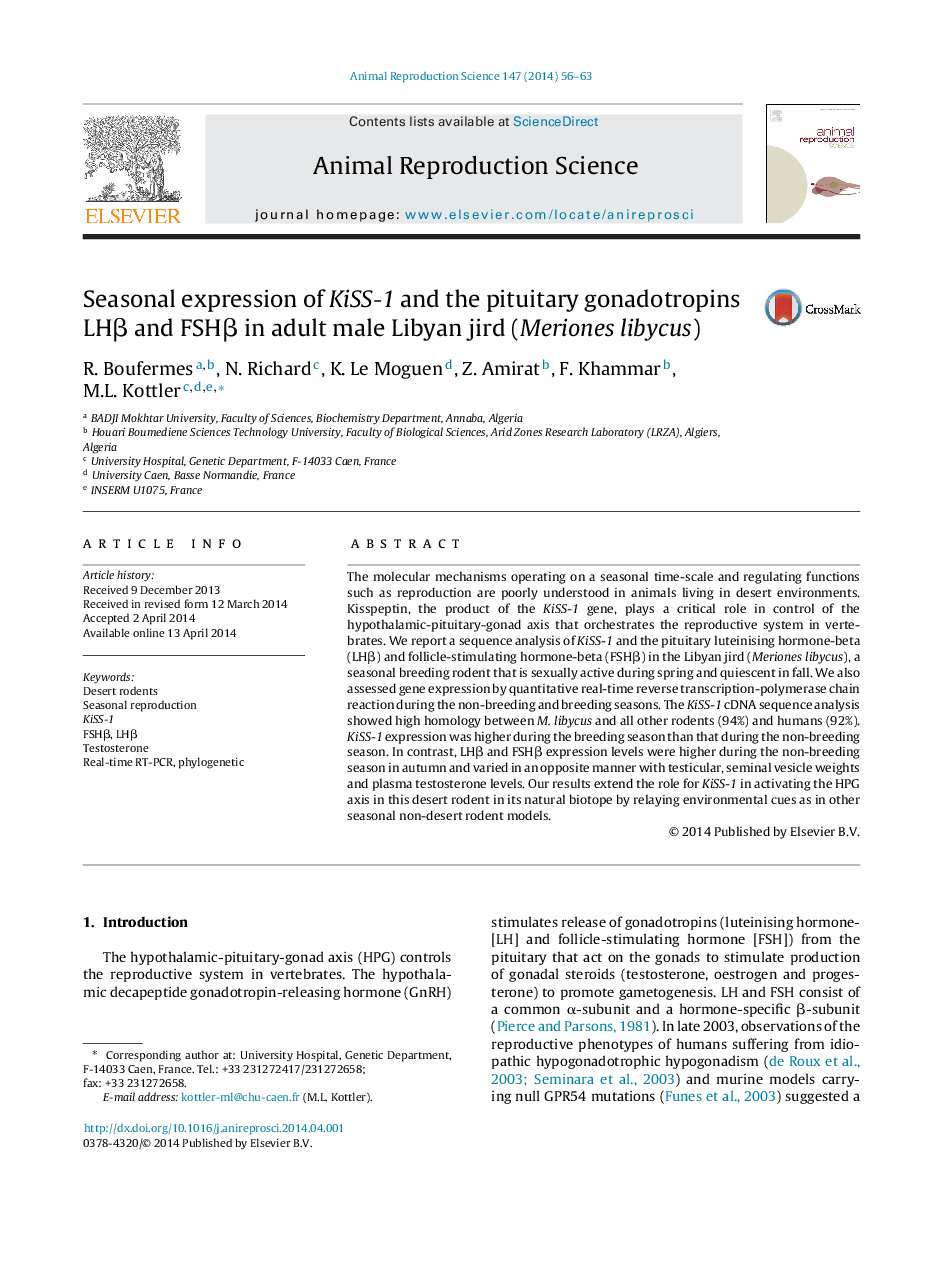| Article ID | Journal | Published Year | Pages | File Type |
|---|---|---|---|---|
| 2072871 | Animal Reproduction Science | 2014 | 8 Pages |
Abstract
The molecular mechanisms operating on a seasonal time-scale and regulating functions such as reproduction are poorly understood in animals living in desert environments. Kisspeptin, the product of the KiSS-1 gene, plays a critical role in control of the hypothalamic-pituitary-gonad axis that orchestrates the reproductive system in vertebrates. We report a sequence analysis of KiSS-1 and the pituitary luteinising hormone-beta (LHβ) and follicle-stimulating hormone-beta (FSHβ) in the Libyan jird (Meriones libycus), a seasonal breeding rodent that is sexually active during spring and quiescent in fall. We also assessed gene expression by quantitative real-time reverse transcription-polymerase chain reaction during the non-breeding and breeding seasons. The KiSS-1 cDNA sequence analysis showed high homology between M. libycus and all other rodents (94%) and humans (92%). KiSS-1 expression was higher during the breeding season than that during the non-breeding season. In contrast, LHβ and FSHβ expression levels were higher during the non-breeding season in autumn and varied in an opposite manner with testicular, seminal vesicle weights and plasma testosterone levels. Our results extend the role for KiSS-1 in activating the HPG axis in this desert rodent in its natural biotope by relaying environmental cues as in other seasonal non-desert rodent models.
Related Topics
Life Sciences
Agricultural and Biological Sciences
Animal Science and Zoology
Authors
R. Boufermes, N. Richard, K. Le Moguen, Z. Amirat, F. Khammar, M.L. Kottler,
